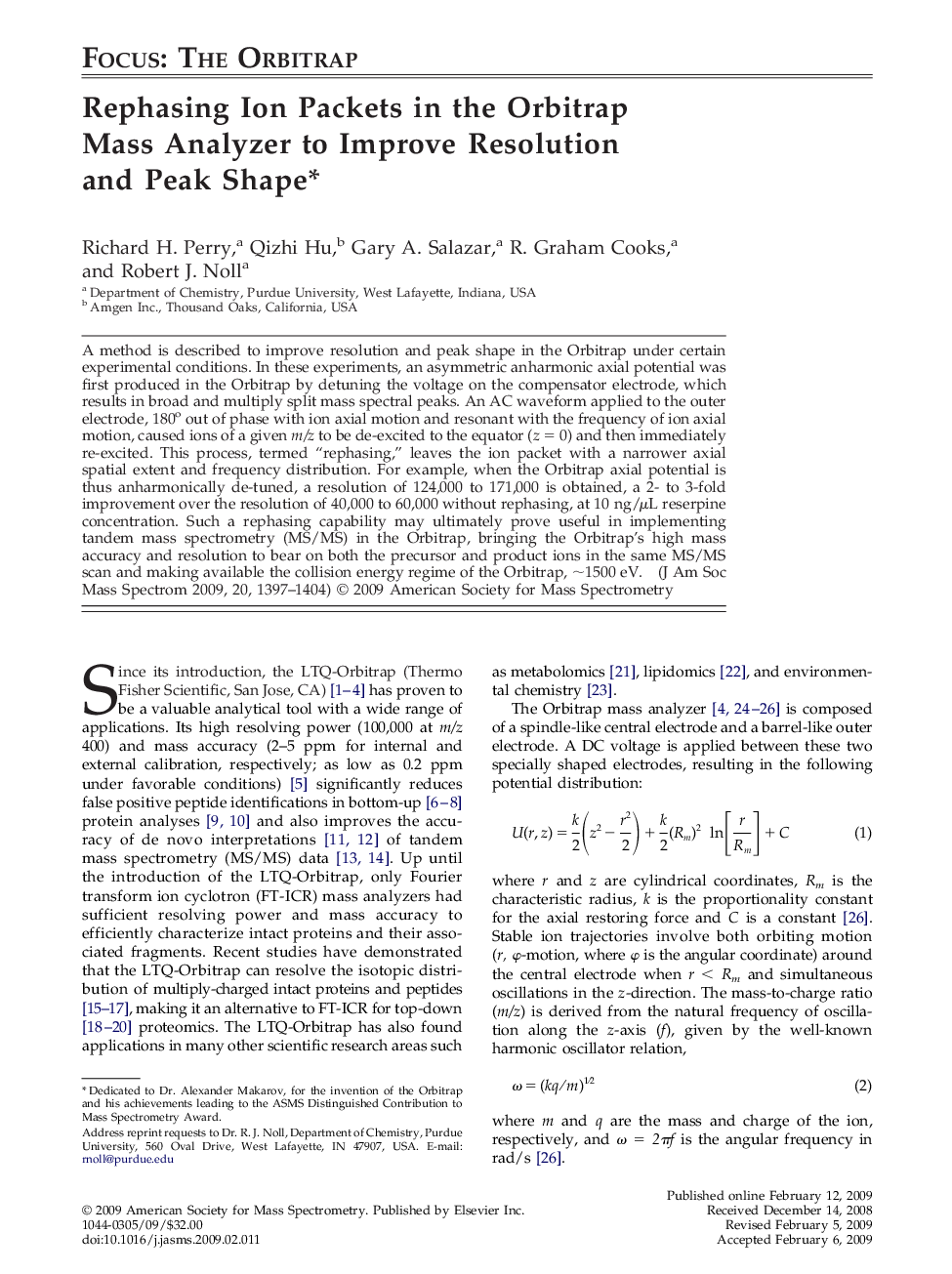| کد مقاله | کد نشریه | سال انتشار | مقاله انگلیسی | نسخه تمام متن |
|---|---|---|---|---|
| 1195213 | 964297 | 2009 | 8 صفحه PDF | دانلود رایگان |

A method is described to improve resolution and peak shape in the Orbitrap under certain experimental conditions. In these experiments, an asymmetric anharmonic axial potential was first produced in the Orbitrap by detuning the voltage on the compensator electrode, which results in broad and multiply split mass spectral peaks. An AC waveform applied to the outer electrode, 180° out of phase with ion axial motion and resonant with the frequency of ion axial motion, caused ions of a given m/z to be de-excited to the equator (z = 0) and then immediately re-excited. This process, termed “rephasing,” leaves the ion packet with a narrower axial spatial extent and frequency distribution. For example, when the Orbitrap axial potential is thus anharmonically de-tuned, a resolution of 124,000 to 171,000 is obtained, a 2- to 3-fold improvement over the resolution of 40,000 to 60,000 without rephasing, at 10 ng/μL reserpine concentration. Such a rephasing capability may ultimately prove useful in implementing tandem mass spectrometry (MS/MS) in the Orbitrap, bringing the Orbitrap's high mass accuracy and resolution to bear on both the precursor and product ions in the same MS/MS scan and making available the collision energy regime of the Orbitrap, ∼1500 eV.
Graphical AbstractAxial de-excitation and re-excitation of ions in a detuned Orbitrap improves ion peak shape and resolution in the mass spectrum.Figure optionsDownload high-quality image (135 K)Download as PowerPoint slide
Journal: Journal of the American Society for Mass Spectrometry - Volume 20, Issue 8, August 2009, Pages 1397–1404